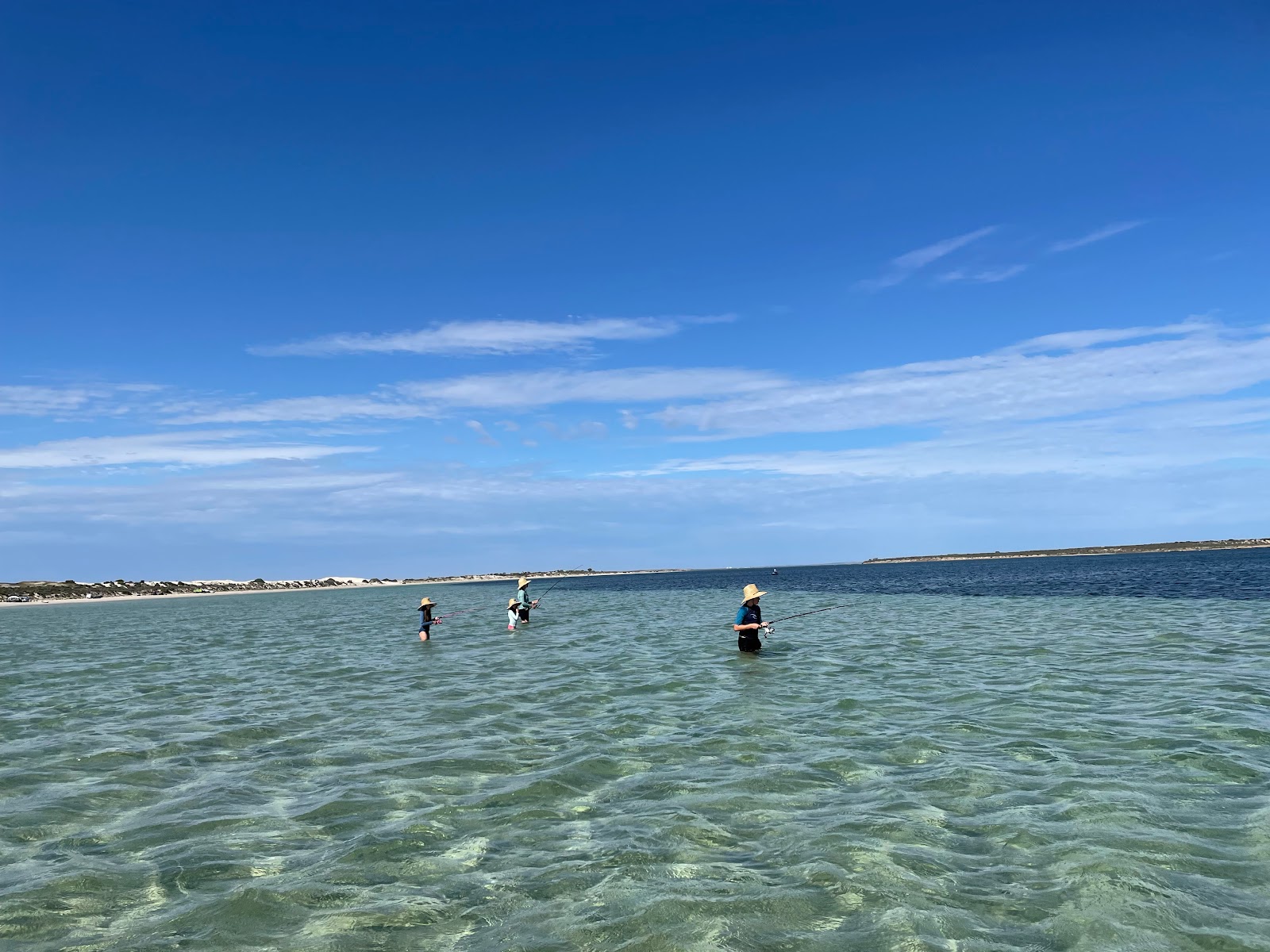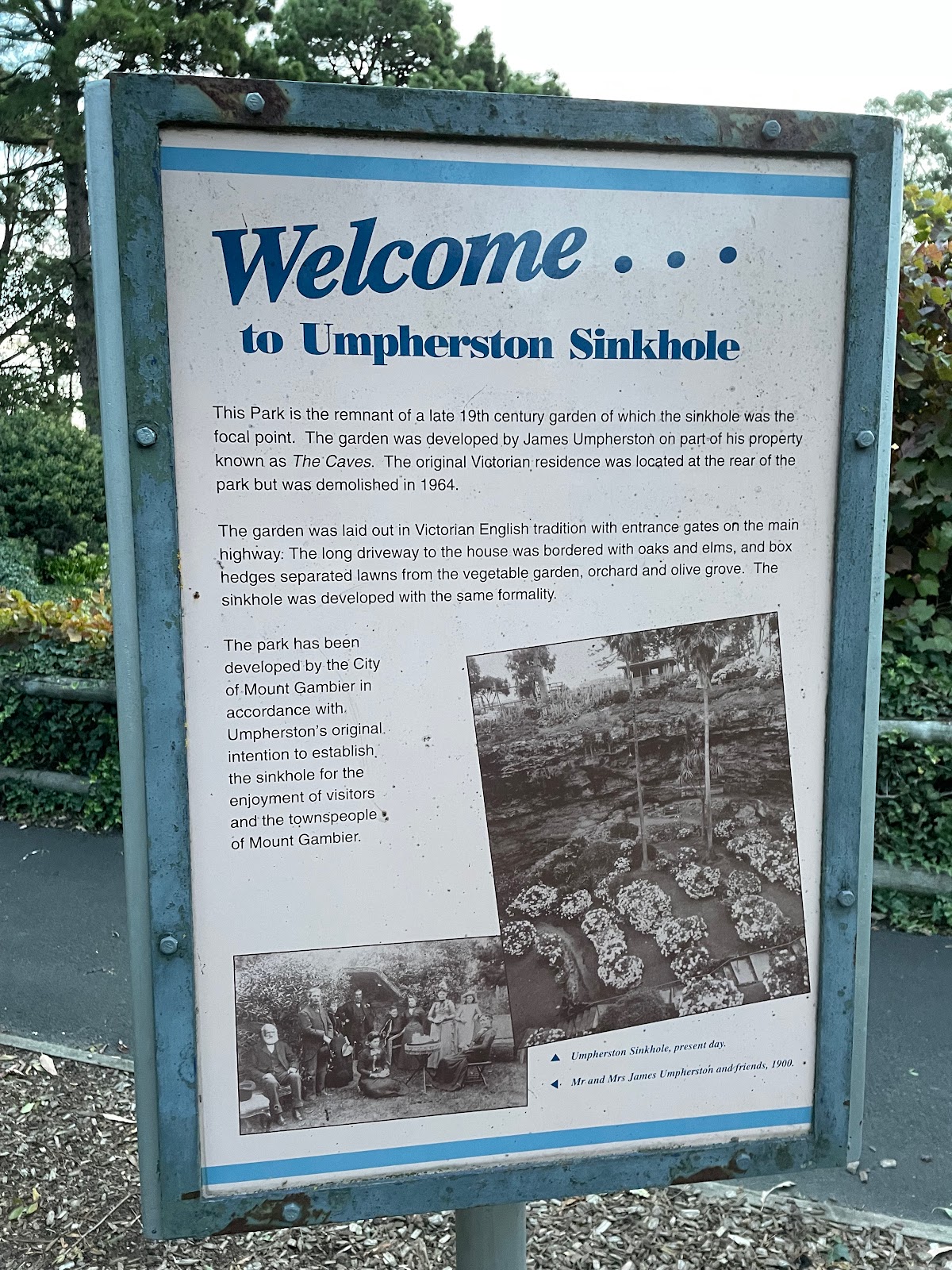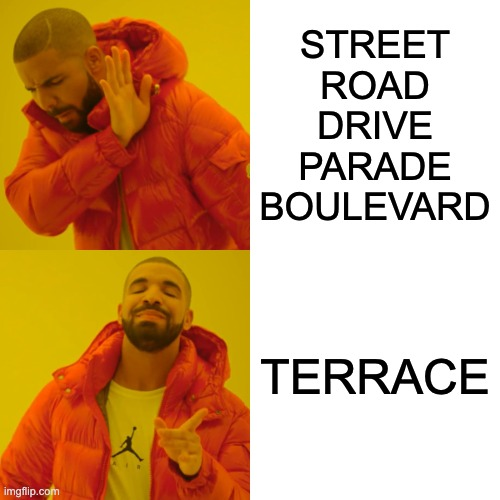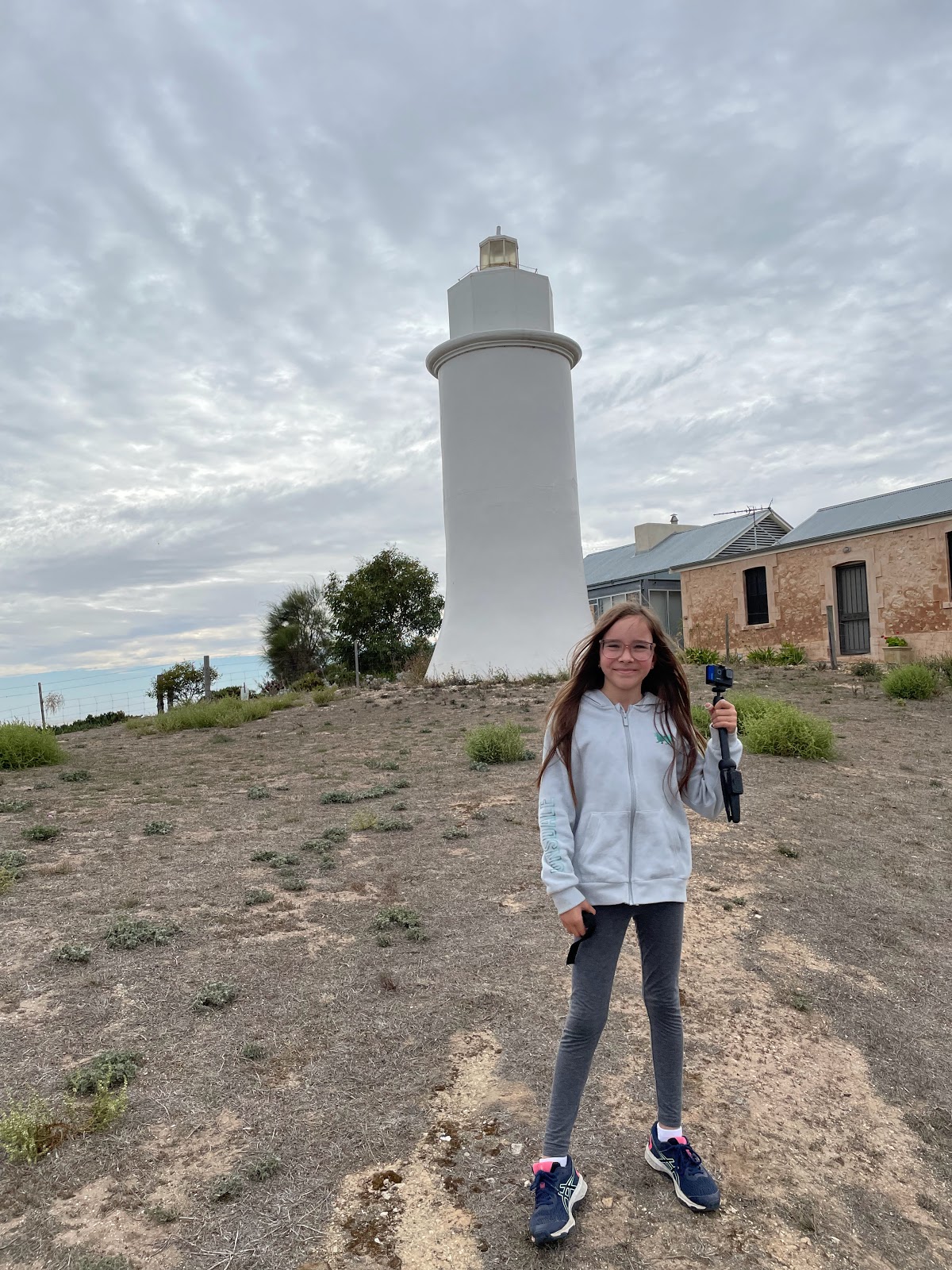Saturday 2 April and we were off. Years in the planning, months in the organising and now days into packing and final preparations, we were ready to go.
Our first destination was Mount Gambier on the Limestone Coast of South East South Australia. We left Melbourne at 10:15am after cleaning the house and then cleaning it again, and finally (with a little more cleaning) we were off. We had to leave the house nice for the family and friends that are house sitting for us while we were away!
We drove to Mt Gambier via Hamilton, with our first fuel stop on the highway in Geelong, paying $2.07 a litre for diesel. Ouch, thanks Vlad. The fuel cost calculation changes brought on by Putin's war in the Ukraine had, while not exactly blown a huge hole in the budget, it definitely scorched the armour a bit. Nothing to be done for it now other than wince each time we filled up! Onward we set off for SA via Mortlake, where we had lunch from the bakery and ate in the park. We arrived in Mt Gambier around 4pm, set up at the caravan park and we were finally on holiday!
No trip to Mt Gambier would be complete without a visit to the Umpherston Sinkhole so we ate dinner and jumped in the car to check it out on as the sun came down. The next day was spent exploring the natural delights of the Limestone coast, flying the drone over the Blue Lake, visiting a cave at Tantanoola, buying a new SD card for said drone when I realised I hadn't actually put one in it and going back to the Umpherstone Sinkhole again, this time with the spotlight and heaps more torches.
It was fun to notice the little differences between South Australia and Victoria. The first one is clearly the weird power poles, made out of an iron girder filled with Concrete, as if there aren't enough trees in SA to make a decent power pole. Then there's the fact that any road of importance in SA is either a Highway or a Terrace. Sure roads and streets exist, but it's Terrace this and Highway that for all the useful ones.
The next thing is the mid 19th century chaos in naming things that resulted in South Australia needing to qualify place names with SE or NW to distinguish them from a different place in the same state that has the SAME NAME. I present you "Kingston SE", so named because there's another Kingston somewhere else in the state. WTH? I mean surely you would just ring up the smaller one and inform them "Sorry old boy, Adelaide is taken, you will need to name your town something else" but apparently not, just chuck a SE or NE or whatever and ruin data cleanliness attempts for generations of future South Australians.
Thankfully a potato cake is called a potato cake and the local beer is not only drinkable but the best domestic beer sold anywhere in the world (of course I'm talking about Coopers, not West End, that stuff is gross), so the culture shock is bearable.
After 2 days it was time to keep travelling, next stop the Coorong. We drove up the Princes Highway via Kingston SE (not to be confused with the other one!)
Lunch was in Meningie, which has a monument to "The Birdman of the Coorong", a strange little midget who used to ride around on Ostrich holding up passers by for their valuables.
 |
| A monument to the Birdman of the Coorong |
The Coorong, if you will permit me a short detour on geography, is a sort of very long estuary connected to the lakes at the mouth of the River Murray. It runs almost 130kms south from Lake Alexandrina, but is only around 1 km wide for its entire length. It's very salty, on average 3 times saltier than the ocean and is packed to the brim with birds, fish and Ned Kelly wannabes mounted on Ostriches. We camped at the Long Point campsite, which was very picturesque and had a dock that proved a fruitful fishing ground, with Hamish pulling in 6 Australian Salmon and Michelle almost landing a Perch that was actually eating size!
We drove out to Narrung, which is situated on the mouth of Lake Albert where it joins Lake Alexandrina, home to Australia's only inland Lighthouse.
Finally we tried to go and see one of the Goolwa Barrages on Lake Alexandrina. Constructed in the 1930s, the barrages are a series of barriers that keep the river high enough for gravity watering of crops in the lower reaches of the SA part of the river and to prevent salt water from flowing up the Murray when the river flow is low. They sound like quite the feat of engineering, however there was a locked gate when we drove up near them, so instead we had a picnic and then drove back to the camper as it started to rain gently. The rain didn't stop for a good 16 hours, which resulted in a very wet pack up and a change of plans; instead of free camping in the Southern Flinders Ranges near Port Pirie, we decided instead to head up to Port Augusta and stay in a caravan park so we could dry out and do some clothes washing.
The next day we headed to the Eyre Pennisula. We were intending to camp at Moonlight Bay, which is near Tumby Bay. The Eyre Pennisula is an interesting place, the north end being in the arid scrublands around Port Augusta, getting progressively greener as it goes south and catches the weather off the Great Australian Bight. It's not exactly verdant fields of green - there's only a single perennial water course on the entire pennisula, the River Tod, which is really stretching the definition of a river vs a creek if you ask me - however it gets enough rain to grow lots and lots and lots of wheat. In the north there are huge farms with the kind of massive tractors a Ukrainian farmer might like to test out by towing an abandoned Russian T72 out of a bog and in the south wine growing, dairy and a great deal of fishing.
We stopped off for lunch in Cowell, which is home to a Great Pub on the main street and some excellent silo art depicting a local identity. We also viewed the silo art in Tumby Bay, this one depicting kids jumping off the towns rickety old pier. Moonlight Bay was a fantastic beach front free camp marred only by the 100km/h winds that sprang up in the afternoon and battered us until the morning.
But as this was our first free camp with no facilities (ie not even a drop toilet), we got to finally break out some of the new gear we'd bought, namely the portaloo. There was much excitement amongst the family as Dad manfully put the camper up by himself as everyone else got involved in setting up and testing out the new facilities. Much commotion followed as the toilet tent was put up, the various chemicals added to the sump and then 3 very excited kids, who were all of a sudden busting to go, christened the loo. I did not try it out and preferred to exercise my right as a man to treat the world as my toilet.
Leaving Port Lincoln, we headed off to Yangie Bay, a small bay in the Coffin Bay National Park, to camp for 2 nights in a SA parks campsite.
Those that know Michelle well will be aware of her predilection for seafood in general and oysters in particular. Suffice to say, we were pretty excited to be headed to Coffin Bay, one of the great oyster producing areas of Australia. Coffin Bay is big and quite complicated with a number of smaller bays and islands, including the delightfully named Little Douglas. It's sheltered and pretty swampy, with many places sporting thick black mud that will swallow the thongs of those tempted into the still blue water. The bay is interesting, however the real action is on the ocean side of the peninsula with some truly massive dune systems leading down to long pristine beaches that are positively bristling with marine life.
We set our camp, having to break out the rock pegs to get the awning to stay up. The portaloo made another appearance, despite a serviceable drop toilet in the campground. Setting up also saw us meet our first mechanical problem, when one of the bed ends wouldn't pull out of the camper. After a bit of worrying an errant nut that had come loose was found to be the culprit and it was fixed quickly.
We then headed down to Almonta Beach for a swim which was great fun, if a bit cold. We did some sightseeing of the surrounds, which includes Point Avoid and Avoid Bay, named by Matthew Flinders in 1802 as a warning to future seafarers as the bay and is fronted by 40m high limestone cliffs and nasty reefs.
 |
| Almonta Beach |
The next day we were going to head out on an adventure! A 4WD tour of the National Park was planned with promises to the kids of boarding on dunes and swimming at these amazing beaches. We headed off up the rough track, to be told by a sign that it's 4WD only and you should lower the tyre pressure. I set 4WD on the car and headed off into the never never. The track got very sandy very quickly and soon had me going firstly to 4WD High Range locking centre diff, then to 4WD low range with the locked centre diff. The kids thought the bumping around was great fun for the first 45 mins, however it started to get old even through we would drive over soft sand, up surmountable hills and then huge slabs of rock that formed the road.
After an hour we had only gone about 15 kms, so we decided to cut our losses and go to a different set of dunes that were easier to get to. I did make one concession to the track for the return trip, dropping my tyre pressure to make the ride a little easier. Little did I know this would set in train the 2nd mechanical problem of the trip...
Getting back to the easy road we headed up to Gunyah Beach, was has a 4km drive in over large soft sand dunes. The first half is fine, just a rocky track, but then you are confronted by a dune that's 3 or 4 metres high, very soft and, well, sandy. I charged up it and had just enough momentum to get over without spinning the wheels. We carried on, over another smaller hump and then down a long soft section which had Hamish asking me why I wasn't just driving in a straight line. "I can really only suggest to the car where to go here mate" was the best I could come up with. Facing another dodgy uphill, we met a family from Queensland that were also a bit iffy about driving on the sand, so I bravely followed them, thinking if they get stuck then I simply wont drive over that bit.
We both stopped just before the last downhill section to the beach and had a good chat - Kieren and Hayley from the Gold Coast - they had 12 months travelling planned with their 2 daughters. The kids played on the sand dunes and eventually we drove down to the beach to meet another couple who were from Mornington, who it turns out were mutual friends of Sarah and Trav! A small world indeed. We went for a swim, had some lunch and then decided the beach was better where we had swum the day before, so we decided to head back to Almonta. I charged up the dunes with plenty of speed and had no trouble getting back onto the bitumen.
A lovely afternoon at the beach and then we headed back to the campsite. Dinner that night was going to be Oysters, Fish and Chips in the Coffin Bay town, so I thought I'd better re-inflate my tyres to road running pressure. I got out the trusty old air compressor and nothing. It cut out as soon as it went to inflate the tyre. I tried a couple more times, finally with the thing refusing to turn on at all. I didn't realise at the time, but I'd actually blown a fuse on the car. Tyres still at 25 psi, we drove into town where I pumped them back up at the service station.
We finally got those oysters, Michelle, Hamish and I sharing 2 dozen (and some fresh local whiting as well). Yumm!
The next destination was Perlubie Beach on Streaky Bay, but Before leaving Coffin Bay we had some administration to attend to: we had to dump the portaloo. I'm sure you've heard the phrase "dropping the kids off at the pool", which is of course referring to a bowel motion. Well this is the bit where you need to go and pick the kids up from the pool. It's smelly and unpleasant so I bravely left it to Michelle (with a peg on her nose) while I topped up the water tanks on the camper.
We lunched in Elliston and then drove into Streaky Bay for supplies, but everything was shut so we kept on rolling to Perlubie. Apparently previously little known, Perlubie is a gem where you can free camp on the beach at a lovely sheltered spot with a magnificent beach where you can fish, find razor clams in the seagrass and have a fire. Then someone Instagrammed it and published it on WikiCamps, so now it's more popular than Baby Shark. It's an amazing place to stay and even with 60 other caravans and campers it wasn't over crowded.
We got set up, I put my feet up and thought "I'd better get a beer and send a photo to everyone who has to go to work tomorrow". I grabbed one from the fridge in the back of the car and thought, "Hmm this isn't exactly ice cold, I wonder what's going on with the fridge" when I saw the dreaded "E1" flashing where the current temperature readout should have been.
 |
| I drank the beer before fixing the fuse |
The fridge battery was flat and our fridge/freezer was on the way to being a dark, warm box that ruins food. We put all the perishable food into the camper fridge and set about diagnosing the problem. Pretty quickly we worked out the battery wasn't charging from the car and a short time later found and replaced the offending blown fuse. The air compressor did it! We sorted it all out, however it did take 16 hours of driving the Nullarbor plain to get the battery up to full charge again.
The next day was all about fishing. We would simply walk out from the camper into the water a few hundred metres, cast the line and reel in fish after fish. The kids caught a number of undersized whiting, and then Michelle managed to get a fish that swallowed the entire hook. This caused a great deal of commotion as the fish had pretty sharp, scary teeth and wasn't all that keen on coughing up the hook. Added to that no one knew what kind of fish it was, so we weren't sure if it was undersized and had to be thrown back into the water. Eventually we worked out it was a leatherjacket, so we could eat it, and it was decided that the fish was going to be our first self caught seafood dinner. It came up a treat, and went very well with the gummy shark fillets we had bought in Streaky Bay that afternoon to bolster the fish dinner.
 |
| Fishing action in Perlubie |
We needed a good night sleep, as the next day was one of the first real frontiers of our trip - the Nullarbor! Needless to say the Nullarbor is a very long drive. We headed off early, filling up with fuel at Ceduna ($1.85 / litre, cheapest yet), where Michelle's dad John informed us that in 1972 when he was last here the paved road finished and it was dirt up to the border. Well it seems in the meantime they paved it, however they still hadn't painted the lines so we had to guess where on the road we should drive. This wasn't a big issue as there wasn't much traffic going either way.
We stopped to look at the Windmill museum in Penong, which was highly interesting and had the largest windmill in the southern hemisphere (or something like that, can't really remember...). We continued along the never ending road, which had still had plenty of trees up past Yalata. We stopped for lunch, somewhere. Somewhere else we crested a hill and lo and behold it was the plain. No more trees, just saltbush as far as the eye could see. We stopped for a snack at the Nullarbor road house (didn't fill up, $2.80 / litre, ouch) then kept driving, with our destination being one of the many many free camping spots on the Bunda Cliffs, which are the 100m high limestone cliffs that line the edge of the Great Australian Bight. We missed the turn off for the wiki camp spot we had chosen, so we kept going to another one.
 |
| Windmill Museum in Penong |
The wind was blowing a gale on the cliff top and it was too exposed to stay, so instead we took some photos with the drone, which was struggling to hover with the gale blowing behind it. Discretion being the better part of valour, I decided to put the drone away before it got caught in a gust and fell off the edge of the world, never to be seen again. We kept going to a camp site that was apparently less exposed, stopping about 10km from the WA border. We found a great site that, while still being pretty windy, didn't feel like we were doing a 100km/h down the highway and hanging our heads out of the car window.
 |
| Bunda Cliffs, very windy |
 |
| Camping at 10km Peg |
For our final night in SA we lit a fire and enjoyed the isolation of the edge of the world. All was well, until the gale woke us up at 2 in the morning, but we didn't actually lose anything or have the camper blow away.
That brings us to the end of part 1 of our adventure. We'd done a lot of driving (around 2890km to that point), caught heaps of fish (even ate one), camped on the beach, gone 4 wheel driving on sand dunes, explored the Coorong, ate Coffin Bay oysters at the source and were still on speaking terms with each other. Great Days in SA indeed.








No comments:
Post a Comment